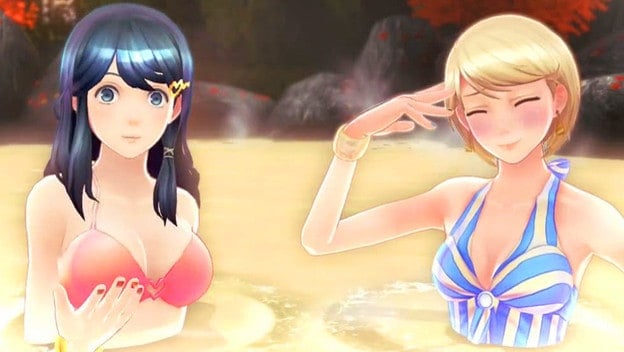Tokyo Mirage Sessions #FE , the Nintendo and Atlus JRPG mashup of Fire Emblem and Shin Megami Tensei elements, has been released. All over the world, people are able to play, enjoy, and criticize the game in equal measures. It’s almost the same everywhere, except in Japan where some risky content was left in the game. Such things were removed from the US and European releases, but did it really make much of a difference? We’re not here to talk about whether these decisions were right or wrong today, but to look and see if the choices influenced the story or the design decisions could be understood.
Let’s take a broader look at the censorship. Quite a bit of it happened during animated segments, cutting some cleavage out of Tsubasa’s “Feel” outfit, obscuring Aversa’s breasts during a cutscene, and turning Kiria’s “Reincarnation” bottoms into pants, rather than a bikini bottom and chaps. None of these were necessary to the story. In the case of Aversa, it was even counterproductive, as the boss is completely on display during in-game and in-battle events. These adjustments felt knee-jerk, as did a tweak that made a wall of women in bikinis, which appeared during another anime segment, more modest. Kiria and Tsubasa segments aside, most of these were brief, blink and you’ll miss it moments. They didn’t alter the story, but I honestly can’t understand why Aversa, Kiria, and the posters needed to be adjusted.
Tsubasa’s censorship, on the other hand, almost makes sense. One of the first things Maiko, head of Fortuna Entertainment, says when she meets Tsubasa is that she’s going to play up the pure and innocent angle. This is a young woman in high school, and she’s going to be the pristine idol. Perhaps Nintendo decided to carry that a bit further for her overseas release? Her bikini is removed from one story segment, replaced with a full body, sporty outfit. The music video above hides cleavage. The upskirt shots while she rides Caeda’s pegasus are obscured. Perhaps it’s an attempt to make her more modest in the west, where people have a different view of purity. Again, not saying whether this is right or wrong, but it’s easier to understand why Nintendo made the decisions they did. And, putting aside the bikini segment that relates to Gravure modeling, the choices don’t hurt Tokyo Mirage Sessions #FE’ s story.
But let’s go back to Gravure modeling. This is a sort of gig idols may do in Japan. They’ll pose and be photographed for magazines looking as sexy as possible. Those idol posters I mentioned earlier, which appeared in an animated segment, were Gravure models. There’s a point in-game where Itsuki, Tsubasa, and Touma are looking at a Gravure magazine, but the game doesn’t describe it as such. Perhaps Tsubasa’s swimsuit outfit was cut, the idol posters adjusted, and the magazine renamed because Nintendo didn’t know how to explain such a concept to western audiences and worried how it would be taken. Gravure magazines and pictures can be very provocative. The removal and tweaking of such elements in Tokyo Mirage Sessions #FE does alter the story, since it’s removing a part of Japan’s idol lifestyle. It’s a concept westerners may not understand.

Finally, there’s the hot springs censorship. In Japan, Tokyo Mirage Sessions #FE had an add-on that sent everyone to a secret hot spring. It offered new cutscenes that offered additional insights into character personalities and suimsuit costumes. It’s the only DLC we didn’t get. It’s easy to see why. Such an event is seen as very intimate. We don’t have the hot springs experience in North America or Europe, really. Plus, it’s the most fanservice-filled part of the game. Nintendo was probably worried about the perception of such an event and pulled it as a precaution. While it didn’t offer critical story information, this was an event that some might feel developed characters, so it could have helped enhance the story for some players. But, it was also optional to begin with, so how crucial could it have been?
Yes, quite a bit was changed in Tokyo Mirage Sessions #FE . Nintendo arranged for alterations both big and small. The most major ones had to do with the Gravure modeling. It’s a part of Japan’s idol culture and some could argue its removal means players lost something. A few of the outfit alterations just seem silly, in retrospect, though maybe part of it was to preserve Tsubasa’s purity. And, at least the hot springs were always optional. We’ll never know if these decisions were 100% right or wrong, since there was never a choice, but perhaps we can take some solace in knowing that people who do want to play the game have a means of enjoying it in their native language.
